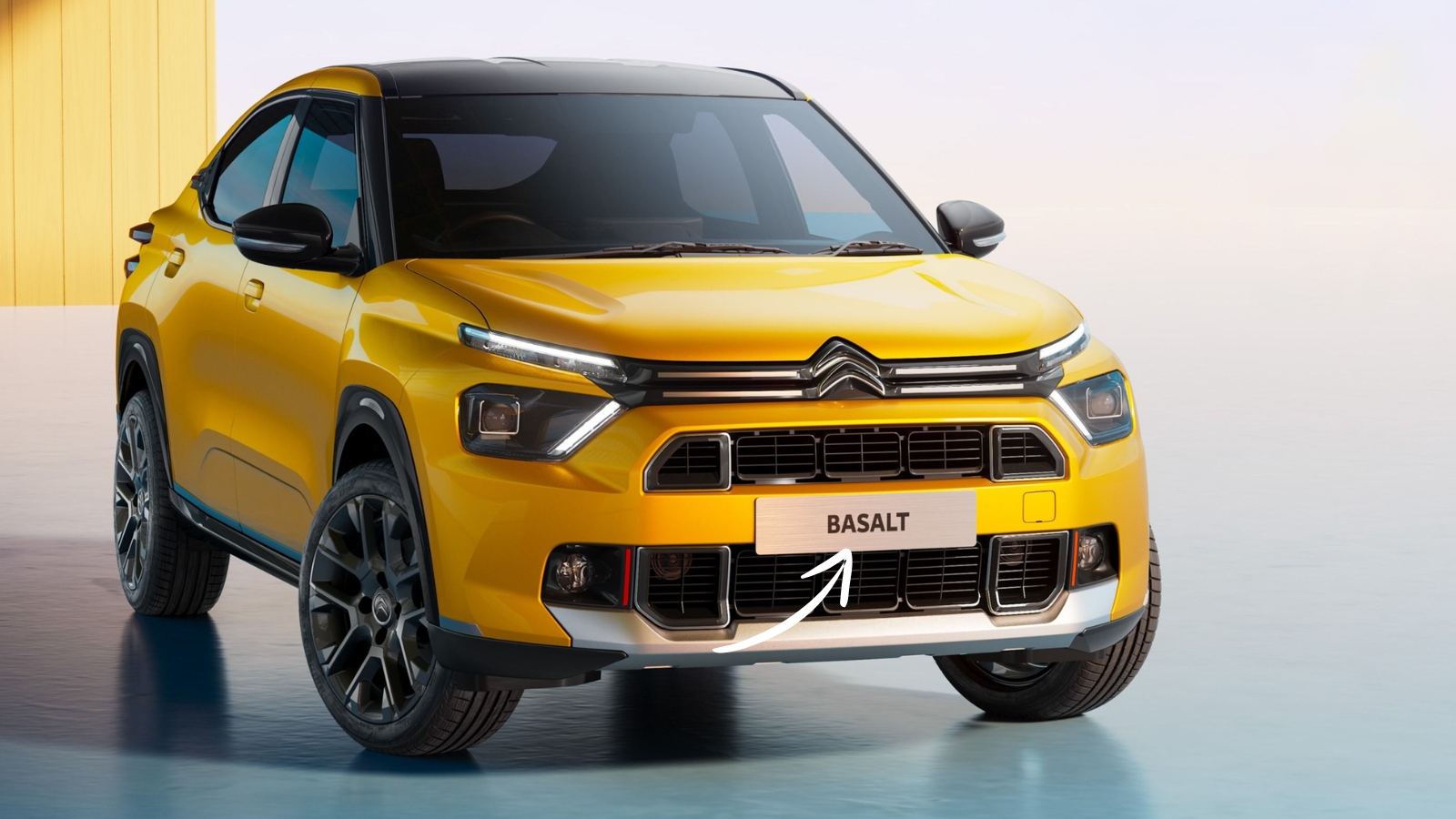Citroen Basalt: Citroen has finally pulled the wraps off its much-anticipated Basalt coupe-SUV, marking the French automaker’s entry into one of India’s fastest-growing automotive segments. The distinctively styled crossover, which slots between the C3 hatchback and C5 Aircross in Citroen’s India lineup, combines the elevated seating position of an SUV with a rakish roofline that gives it a more dynamic presence on the road.
Unmistakably French Design That Turns Heads
In a sea of increasingly homogeneous crossovers, the Basalt makes a bold visual statement that’s instantly recognizable as a Citroen. The front end features the brand’s signature split-headlamp setup, with slim LED daytime running lights positioned above the main headlight units. The double-chevron logo extends outward into chrome strips that run the width of the fascia, creating a distinctive face that stands apart from rivals.
“We wanted to create something with genuine character,” explained Pierre Leclercq, Citroen’s Global Design Director, during the virtual unveiling. “Too many vehicles in this segment look almost identical from certain angles. The Basalt is unmistakably a Citroen from any perspective.”
The coupe-like roofline tapers dramatically toward the rear, though not at the expense of headroom for back-seat passengers – a clever bit of packaging that Citroen engineers are particularly proud of. The 17-inch diamond-cut alloy wheels on higher-spec variants fill the arches nicely, while the contrast roof and distinctive C-pillar treatment add visual interest to the side profile.

Comfort-Focused Interior with Tech Upgrades
Step inside the Basalt, and you’re greeted by an interior that prioritizes comfort – a longstanding Citroen hallmark. The front seats, which the company calls Advanced Comfort seats, feature additional padding and support that make long journeys noticeably less fatiguing. The suspension, likewise tuned for comfort rather than outright sportiness, uses progressive hydraulic cushions that effectively filter out road imperfections.
The dashboard layout is clean and uncluttered, with a 10.2-inch floating touchscreen handling infotainment duties. Wireless Android Auto and Apple CarPlay come standard across all but the base variant, while the top-spec Shine trim gets connected car features including remote engine start, geofencing alerts, and over-the-air updates for maps and system software.
“The Basalt interior represents our philosophy of ‘comfortable technology’ – everything you need, nothing you don’t, and all presented in a way that doesn’t require a computer science degree to operate,” quipped Saurabh Vatsa, Brand Head, Citroen India, during the media interaction.
Rear seat space is impressive considering the sloping roofline, with adequate headroom for passengers up to six feet tall. The 445-liter boot, while not class-leading, offers sufficient space for weekend luggage, with 60:40 split-folding rear seats adding versatility when needed.
Powertrain Options Balanced for Efficiency and Performance
Under the hood, the Basalt offers two engine options – a 1.2-liter naturally aspirated petrol producing 82hp and 115Nm of torque, and a more powerful 1.2-liter turbocharged unit delivering 110hp and 190Nm. The former comes paired with a 5-speed manual gearbox, while the turbo engine can be had with either a 6-speed manual or a 7-speed dual-clutch automatic transmission.
Fuel efficiency figures are impressive, with the naturally aspirated engine returning an ARAI-certified 18.7 km/l, while the turbocharged manual and automatic variants deliver 18.2 km/l and 17.9 km/l respectively. These numbers position the Basalt competitively against established rivals in the segment.
“The turbo engine, in particular, delivers a driving experience that’s both engaging and refined,” noted automotive journalist Vikram Gour after a brief test drive at the launch event. “There’s minimal lag, and the dual-clutch transmission shifts quickly and intuitively, especially in urban driving conditions.”
Citroen Basalt: Competitive Pricing Strategy Targets Volume Segment
Perhaps the most surprising aspect of the Basalt launch is its aggressive pricing strategy. Starting at ₹7.99 lakh for the base You variant with the naturally aspirated engine, and topping out at ₹13.79 lakh for the fully-loaded Shine turbo-automatic (ex-showroom), the Basalt undercuts most of its direct competitors by a significant margin.
This pricing puts the Basalt in an interesting position – it’s more affordable than traditional compact SUVs like the Hyundai Creta and Kia Seltos, while offering more space and features than sub-4-meter offerings such as the Nissan Magnite and Renault Kiger.
With production already underway at the company’s Tamil Nadu facility and deliveries scheduled to commence next month, Citroen seems poised to make a meaningful impact in India’s crowded crossover segment with the distinctively styled, comfort-focused Basalt.